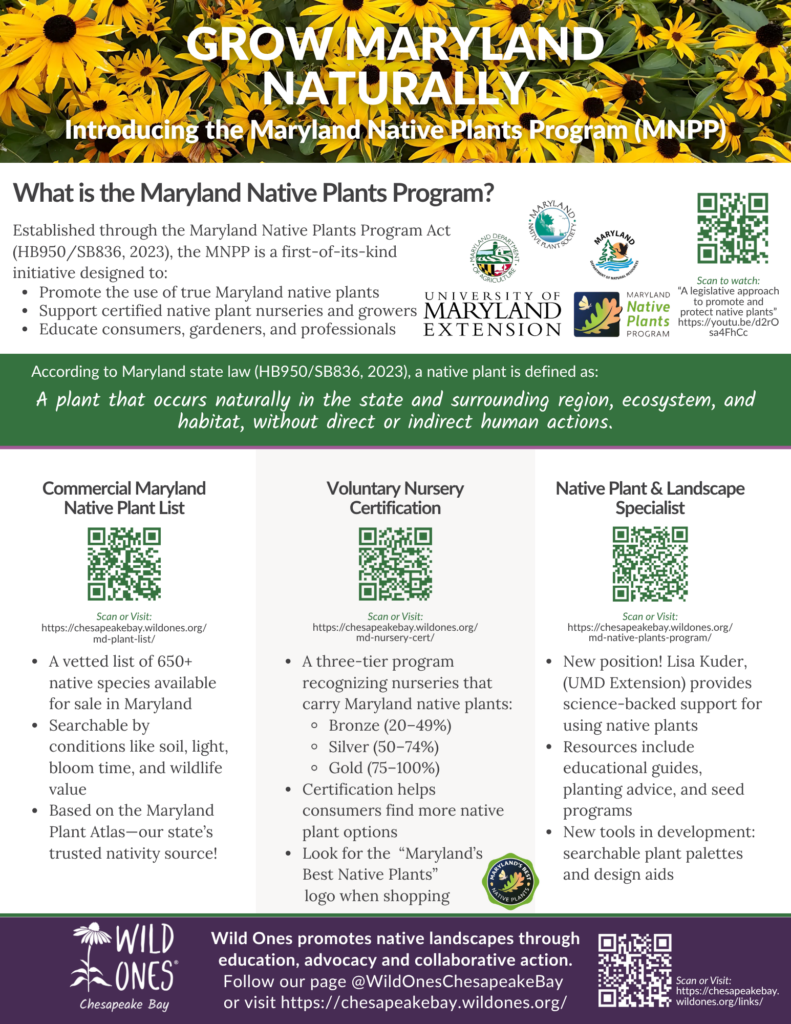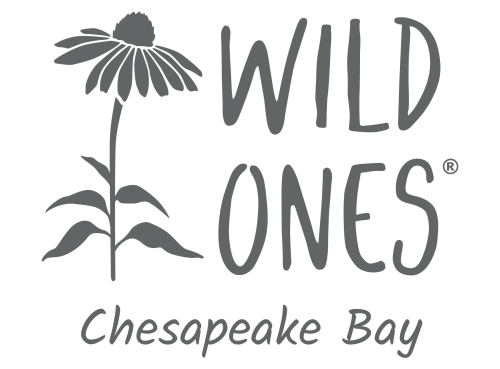Members of Wild Ones are committed to restoring native landscapes and educating the public. We are often asked a seemingly simple question: “Which are the best native plants?” Join us for the recording of our May Garden Chat where Barry Stahl (President of the Board of Directors of Chesapeake Natives, Inc. and member of Wild Ones Nation’s Capital Region) presents “BENEFICIAL PLANT SELECTION: Things to consider when making choices”.
Barry Stahl is a professional horticulturist with a career in public gardens throughout the Washington DC area. As a volunteer, he has served as a Master Naturalist, Tree Commissioner, Community Garden Designer and Board Member at Chesapeake Natives Nursery. In 2019, along with his wife Kathy Shollenberger, he founded the Wildlife Habitat Program through Prince George’s Audubon Society. Barry’s presentation points out that there are many considerations when choosing native plants, and he provides a framework for optimal plant selection.
PGAS Wildlife Habitat program resources
During his presentation, Barry mentions the A Habitat Hundred, which is a selected list of Audubon Plants for Prince Georges County, Maryland. In addition to A Habitat Hundred, the Prince Georges Audubon Society’s (PGAS) Wildlife Habitat Program page offers a number of helpful documents under their Learn More page:
Top 10 Native Plants For Your Habitat Garden
Birds, Plants, and Garden Structure
Guidelines for Creating Habitat
PGAS Wildlife Habitat program guidelines for creating habitat:
- Plant natives.
- Provide structure.
- Provide food.
- Provide shelter and housing.
- Use your water.
- Replace herbicides, insecticides, and fertilizers.
- Provide safety and safe haven.
- Spread the word.
Selecting and Purchasing Native Plants
Wild Ones Chesapeake Bay recommends using the new resources available from the Maryland Native Plants Program for choosing native plants and certified native nurseries. Learn more about the MNPP by visiting our recent blog.

